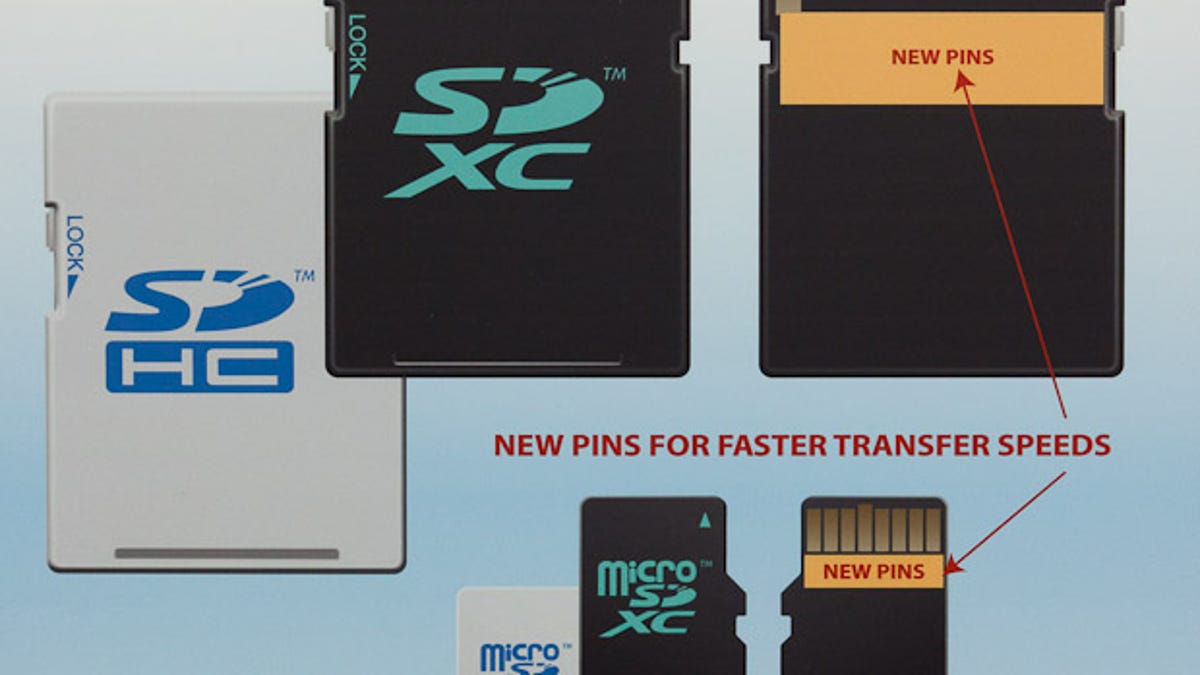Triple-speed SD card standard finalized
The SD Association's new UHS-II technology will speed SD card transfer speeds. Plus: a new color e-book format is announced at CES.

The SD Association announced a new interface for flash memory cards today that triples data transfer speeds.
The faster SD card specification was expected since the group started previewing it in September. But more unusually for the consortium, the SD Association also announced an e-book specification at the Consumer Electronics Show in Las Vegas.
"Our new e-Book application...opens broad consumer access to e-book content, and turns billions of existing SD mobile phones and devices into e-readers," Norm Frentz, chairman of the SD Association, said in a statement. "SD continues to evolve its capabilities to support voracious consumer demand for portable movies, television broadcasts, high-definition home videos, and now full-color books."
It's not yet clear who among e-book reader makers, publishers, or other companies are on board with the new specification, but two partners showing eBook support at CES are Toshiba and Sharp, the association said. Such partnerships will be important to its success, though, and there already are other e-book formats, such as ePub.
But eBook won't live in isolation. "The association plans to support popular external formats like ePublish, CPS, XMDF and ".book" formats in the near future," said SD Association communications director Kevin Schader. And to keep content publishers happy, it's free to use and supports copy protection.
"Just like SD-Video, SD-Audio and SD-Binding, the SD eBook allows consumers to view electronic books supporting SD's format on a multitude of SD products while preserving copyright protection for publishers," Schader said.
The group's core work is with SD itself, though. The format has largely extinguished two rivals, xD Card from Fujifilm and Olympus, and Memory Stick from Sony, though CompactFlash retains clout in a high-end niche.
SD cards are growing in maturity, with Canon supporting them in its top-end SLR and offering dual SD slots in its new Vixia HF G10 high-end videocamera. And Lexar announced 64GB and 128GB professional-grade SD cards, taking advantage of the new capacity of the SDXC standard. But even those newly announced and not-yet-available cards are relatively slow, when it comes to transferring data--just 20MBps.
To speed things up, SD developed the Ultra High Speed (UHS) communication technology for SD cards--either the older SDHC variety or the newer SDXC models, with much higher data capacity. The first generation, UHS-I, reaches 104MBps.
The new UHS-II technology, though, adds a second row of electrical contacts and boosts data transfer speeds to 312MBps. And there's more to come.
"We've tripled bus interface speeds from last year's UHS-I development, and we plan to double UHS-II speeds in the future," Frentz said.
Devices supporting the UHS-II technology will also be able to read older SD cards, the SD Association said.
In September, the group said UHS-II cards and devices using them would become available in 2012.
Updated 3:48 p.m. PT with comment from SD Association.

